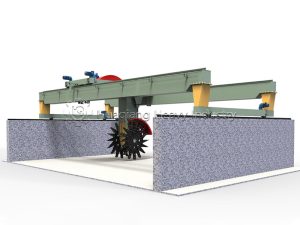Introduction to Composting Machines
Composting machines have revolutionized organic waste management by transforming food scraps and garden waste into valuable fertilizer. These devices range from small household units to large industrial systems, offering efficient solutions for waste reduction and sustainable agriculture practices worldwide.
Price Ranges for Different Composting Machines
Household Composting Machines
Home composting equipment varies from simple outdoor compost bins to sophisticated electric composters. Basic 120L compost bins typically cost around $150-200, while smart electric kitchen compost machines range from $100 to $300 per unit. These compact devices are perfect for processing daily kitchen waste efficiently.
Commercial Composting Systems
Commercial-grade equipment shows significant price variation. Small restaurant-sized automatic aerobic composters cost between $6,000 and $8,000, while larger units capable of processing 300kg per day can reach $12,000 to $40,000. Industrial-scale composting systems, including track-type turners and custom-designed machines, may cost from $36,000 to $188,000 depending on capacity and features.

Effectiveness of Composting Machines
Composting machines prove highly effective in organic waste processing, offering distinct advantages over traditional composting methods:
- High Degradation Efficiency:Modern composters can degrade up to 90% of garden waste within 30 days. Advanced machines maintain temperatures of 60-70°C, accelerating fermentation while eliminating pathogens and weed seeds.
- Superior Compost Quality:Automated control of temperature, humidity, and oxygen levels ensures thorough decomposition, producing mature compost that won’t damage plants.
- Environmental Protection:Enclosed designs prevent odor release and reduce greenhouse gas emissions while minimizing landfill usage.
Compost Production Methods
The compost production process involves several key stages, whether using traditional or machine-assisted methods:
- Raw Material Preparation:Combine organic waste such as straw, leaves, animal manure, and food scraps with nitrogen sources like urea or additional manure to optimize the carbon-nitrogen ratio.
- Composting and Fermentation:Layer materials in 20-60cm thickness, adding microbial agents or liquid manure between layers. Maintain proper moisture content and cover the pile to achieve temperatures around 60°C.
- Post-processing:Turn the compost pile after 2-8 days when temperatures decrease. Repeat turning 1-2 times until materials become dark brown and crumbly, indicating complete decomposition.

Food Waste to Fertilizer Machines
Various specialized machines efficiently convert food waste into fertilizer:
- Household Food Waste Composters:Smart devices like FoodCycler use grinding technology to process eggshells, small bones, and other kitchen scraps into dry nutrient-rich material within hours.
- Commercial Food Waste Systems:Small aerobic composters suitable for restaurants can process daily kitchen waste on-site, while larger track-type turners handle mixtures of food waste with straw or manure.
- Industrial Composting Plants:Complete systems integrate crushing, dehydration, fermentation, and screening functions to process large volumes of food waste into organic fertilizer at scale.
From Composting to Complete Fertilizer Production Lines
The journey from organic waste to valuable fertilizer extends beyond initial composting. Modern fertilizer production machine systems integrate composting with advanced granulation technologies to create comprehensive production solutions. Following the organic fertilizer fermentation process, materials processed by large wheel compost turner or chain compost turning machine equipment move to specialized granulation systems.
In complete organic fertilizer production line setups, the fermented material can be processed through disc granulator machines or rotary drum granulator systems for uniform particle formation. For operations focusing on microbial fertilizers, the equipments required for biofertilizer production include specialized fermentation and drying equipment. The drum organic fertilizer dryer ensures proper moisture control, while windrow machine units maintain optimal composting conditions.
Advanced fermentation composting technology for organic fertilizer has revolutionized the organic fertilizer fermentation stage, creating high-quality base materials for subsequent processing. The complete bio organic fertilizer production line integrates these technologies to produce consistent, high-value products. Similarly, npk fertilizer production line configurations utilize double roller press granulator technology in the npk fertilizer manufacturing process to create precise nutrient formulations.
Whether through drum granulation for organic materials or roller press granulator production line for NPK blends, modern fertilizer making machine systems transform composted materials into professional-grade fertilizers, completing the cycle from waste to valuable agricultural input.
Conclusion
Composting machines offer practical solutions for organic waste management across all scales, from household kitchens to industrial processing facilities. By converting waste into valuable fertilizer, these systems contribute to circular economy principles while reducing environmental impact. The wide range of available equipment ensures that suitable composting solutions exist for every need and budget, making sustainable waste management accessible to users worldwide.



